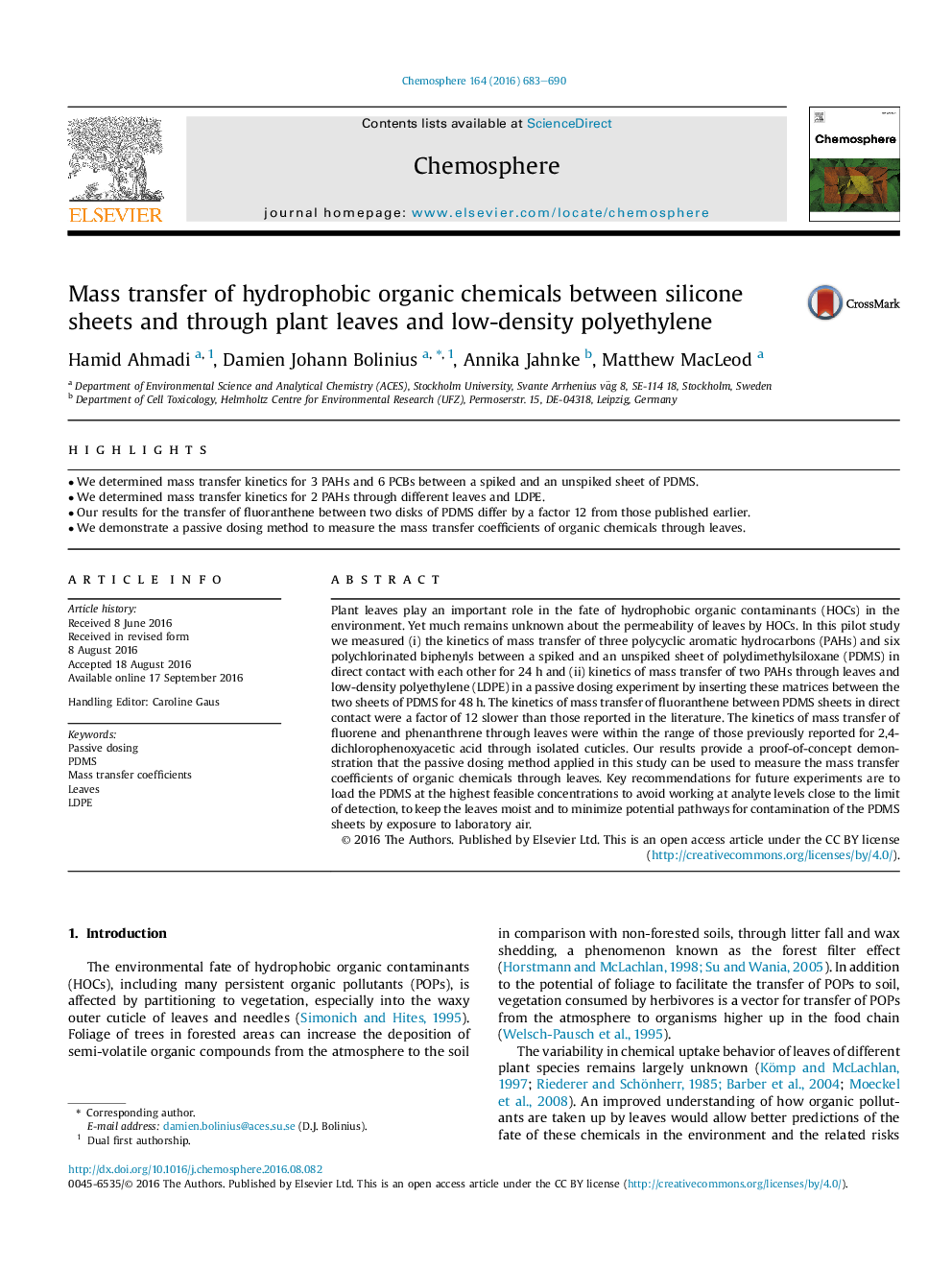| کد مقاله | کد نشریه | سال انتشار | مقاله انگلیسی | نسخه تمام متن |
|---|---|---|---|---|
| 6306063 | 1618807 | 2016 | 8 صفحه PDF | دانلود رایگان |
- We determined mass transfer kinetics for 3 PAHs and 6 PCBs between a spiked and an unspiked sheet of PDMS.
- We determined mass transfer kinetics for 2 PAHs through different leaves and LDPE.
- Our results for the transfer of fluoranthene between two disks of PDMS differ by a factor 12 from those published earlier.
- We demonstrate a passive dosing method to measure the mass transfer coefficients of organic chemicals through leaves.
Plant leaves play an important role in the fate of hydrophobic organic contaminants (HOCs) in the environment. Yet much remains unknown about the permeability of leaves by HOCs. In this pilot study we measured (i) the kinetics of mass transfer of three polycyclic aromatic hydrocarbons (PAHs) and six polychlorinated biphenyls between a spiked and an unspiked sheet of polydimethylsiloxane (PDMS) in direct contact with each other for 24Â h and (ii) kinetics of mass transfer of two PAHs through leaves and low-density polyethylene (LDPE) in a passive dosing experiment by inserting these matrices between the two sheets of PDMS for 48Â h. The kinetics of mass transfer of fluoranthene between PDMS sheets in direct contact were a factor of 12 slower than those reported in the literature. The kinetics of mass transfer of fluorene and phenanthrene through leaves were within the range of those previously reported for 2,4-dichlorophenoxyacetic acid through isolated cuticles. Our results provide a proof-of-concept demonstration that the passive dosing method applied in this study can be used to measure the mass transfer coefficients of organic chemicals through leaves. Key recommendations for future experiments are to load the PDMS at the highest feasible concentrations to avoid working at analyte levels close to the limit of detection, to keep the leaves moist and to minimize potential pathways for contamination of the PDMS sheets by exposure to laboratory air.
Journal: Chemosphere - Volume 164, December 2016, Pages 683-690
